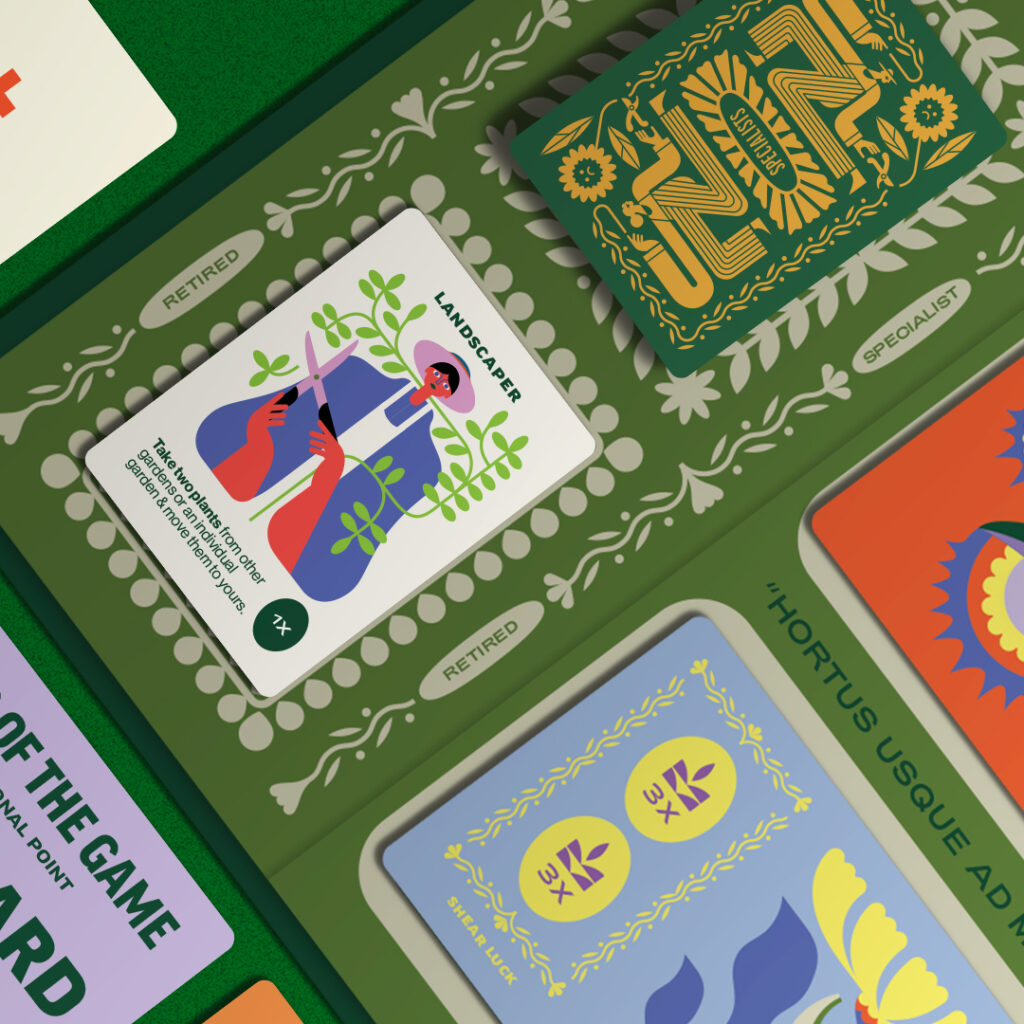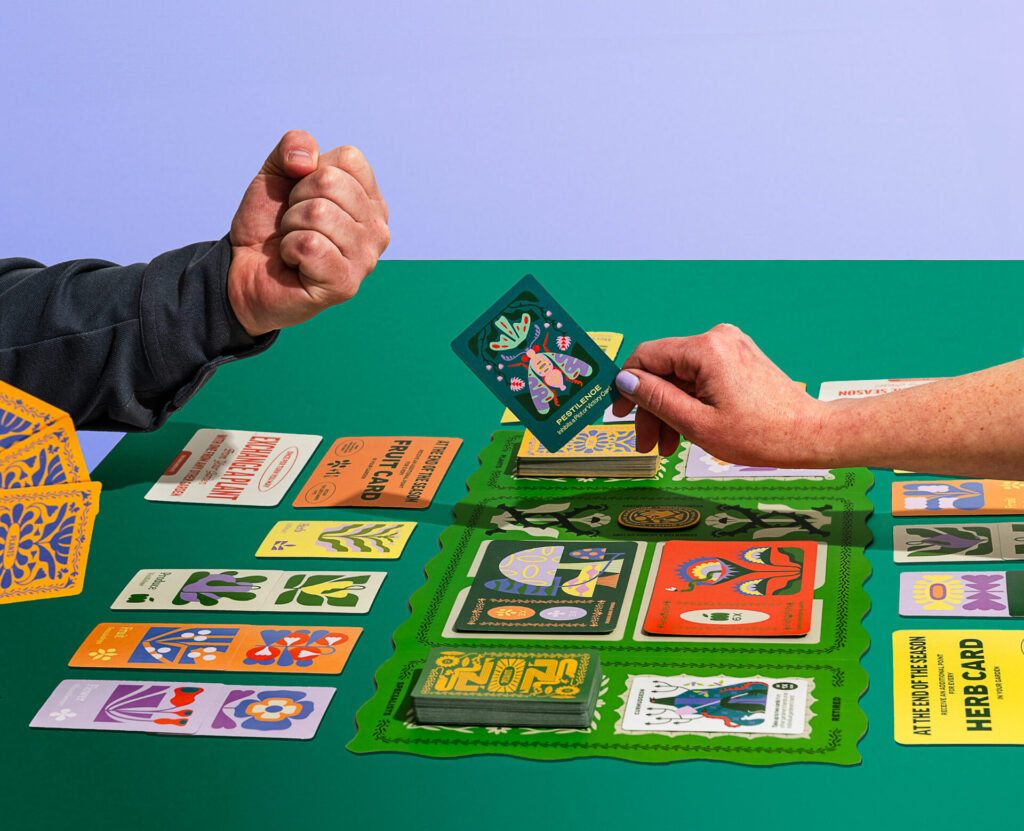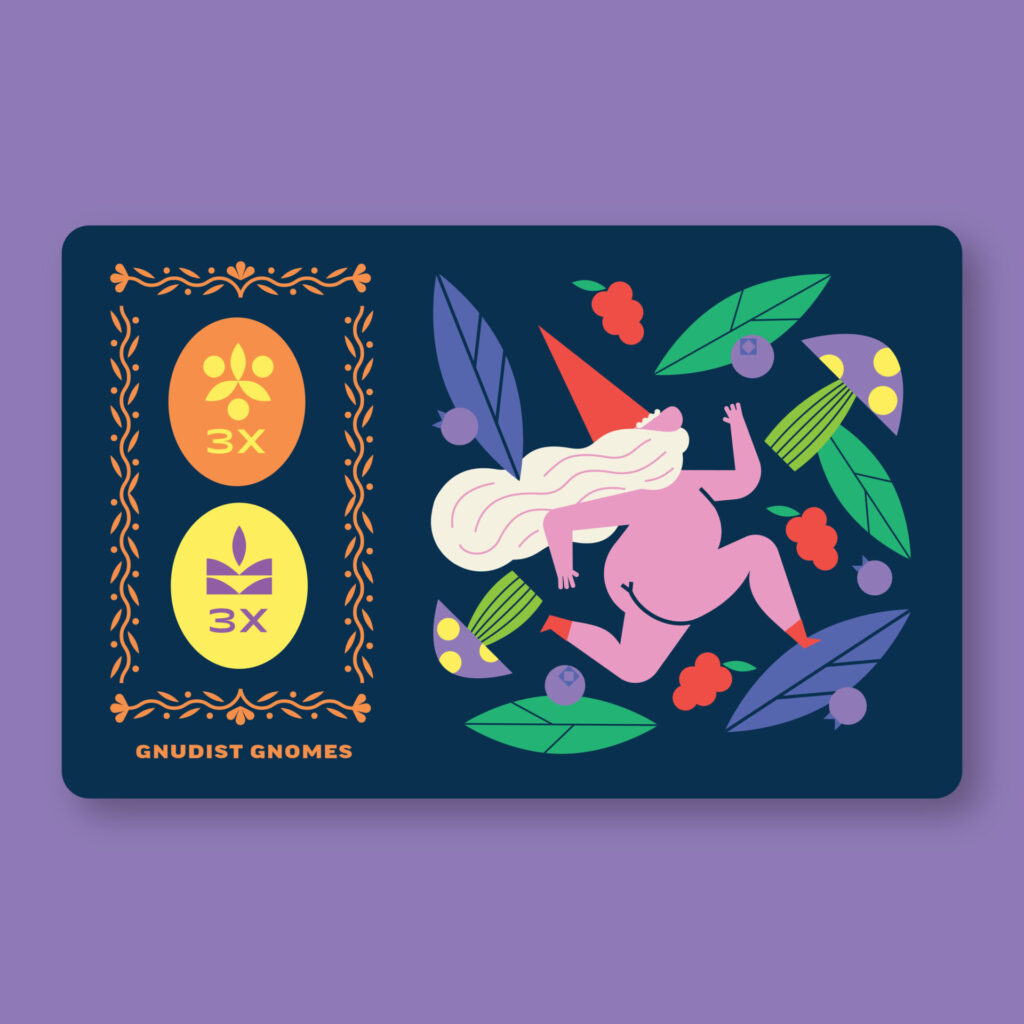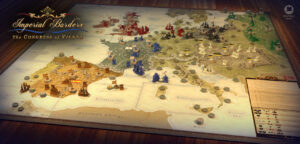
“If the artwork compels, it drives people to learn more”: graphic designer Ross Bruggink on how strong visuals helped his Vicious Gardens Kickstarter bloom
When professional graphic designer Ross Bruggink decided to mix his love of gardening with his eye for creative artwork and create his first board game, he was adamant that visual beauty should be at the heart of the process. That push to create a striking game that was also strategic and quick to learn has reaped huge rewards, with Vicious Gardens currently closing in on $300,000 with half the campaign still to run. Bruggink explained to BoardGameWire how his design and playtesting process, and his decision to partner with services providers for publishing and marketing, helped the campaign to blossom.
The Beginning
As I write this, Vicious Gardens is nearing $300,000 in funding and is almost 2,500% over our initial $12,000 goal. We reached this goal in under 35 minutes. This is, obviously, incredible news and I feel proud of where we are at. This is my first tabletop game, let alone my first Kickstarter campaign, and I am overjoyed with the support we’ve received.
My profession – which I love – is graphic design. I am a creative director and illustrator, co-owning a small branding and packaging studio, Buddy-Buddy. But I also have a passion for gardening. I’m borderline obsessed. I find the physical, seasonal, and visual aspects of it fascinating. You may see where this is going. I wanted to combine the pursuits of design and gardening into a product. I’ve created products before, but these were primarily aesthetic: posters, t-shirts, and the like. I needed to make something with utility that provided a function behind the design.
Enter tabletop gaming.
Creating a Beautiful Product that Connects
From the beginning I knew who I wanted to attract: casual, social gamers like myself, who have little time and mental capacity for large rulebooks or campaigns. I wanted to create a product that was quick to learn, strategic, and fun to play. I wanted to avoid too many components, as these tend to overwhelm me as a player, and as a first time game-designer too complicated to manage. Most of all, I wanted the game to be beautiful.

The style of Vicious Gardens is distinct and fresh, introducing a new aesthetic to the tabletop category. Its bold, graphic style feels relevant and accessible for casual gamers while offering something new to those with extensive game catalogs. I think this has been the most impactful aspect of the product and a key differentiator in marketing and sales.
Throughout this process, the aesthetic quality has really driven the success of the game. There is an immediate, gut-reaction to the visuals a product brings. If the artwork compels, it drives people to learn more. This helps bring people learn more, whether through ads, prelaunch pages, or the campaign itself. I think there is a tendency to forget this. We can become over- focused with visual marketing tactics, or the correct headline copy, but I think the biggest advantage is a simply beautiful product with a compelling presentation.
The theme is relevant as well. Gardening is having a moment right now. Fortunately, this large, encompassing theme covers a wide audience, from the casual to passionate. Unfortunately, there have been a lot of plant games over the last few years. Vicious Gardens took this trending theme and added a unique twist: devious sabotage. Along with the artwork, I believe this is a huge differentiator.
A Long Road
Even though I knew that games often take more than two years to design, I thought, surely I could have something ready within a year, then publish myself using my own network. How wrong I was. I quickly realized my game was horribly broken. But I had such a patient group of friends who trialed different versions with me.
We even had dried beans as monetary tokens. Things were slowly improving, but the game was still a grind. Playtesting for a year brought me to Protospiel MN, a game design conference, where I met such an amazing group of people. Initially, I felt totally out of my element, but quickly made friends and received such good feedback. At 2:30 am after the first night, I changed the rules to create the first version of the game today.
Subsequent playtesting went great. There were many tweaks needed, but I had a functional game that could be a basis moving forward. When I think about how much the game evolved, I am amazed at the difference of mechanics. I think the biggest takeaway here is that nothing was precious to me except the theme and style of game. The mechanics, components, turns, cards have all shifted immensely and I think an openness to change allowed the game to flourish. I believe a theme-forward approach to games is more unconventional, designers like to think of mechanics first, but it was important to me and drove a lot of the design process.
I slowly iterated on this version over the next year and a half, bringing a final version to the next Protospiel along with expansions. I cannot say enough about how much Protospiel helped. Not only did it validate the game design, it led to meeting my publishing partner and created a network of supporters.
Great Partners
I am learning so much every day. I am very, very new to this experience so I want to humbly share advice with that caveat. One thing I know for sure, partnering with people who can fill in with their expertise has been essential to Vicious Gardens. Also, money.
There are elements to this industry that I cannot be responsible for on this this first go. One of them being fulfillment, distribution, and post-kickstarter sales. At Protospiel, I met Jake and Jenna of Pops & Bejou and they could not be a more perfect fit as a publishing partner. Throughout this process they have provided advice and insight from their experience. They understood that I really wanted to leverage my design capabilities and take charge of the campaign and marketing.

I’ve also partnered with LaunchBoom for the pre campaign. There are several companies that provide prelaunch marketing services, and LaunchBoom was a great fit for my needs. Their program gave me control over my visual assets, while providing a platform and tools to create an essential prelaunch campaign. I think working with a pre-launch marketing service was the best decision I made. It can be intense, and even more money and work than you expect. But holy smokes, did I learn a lot, especially as a newcomer to crowdfunding. All of the day-one success is primarily attributed to my prelaunch campaign with LaunchBoom.
The hard truth I learned is that even if you have a beautiful game with a compelling concept, you need to pay for people to hear about it. And to do this, you need capital. I spent a good chunk of cash (equivalent to my initial goal) on pre campaign advertising. Unfortunately, my existing network, while garnering some supporters, was not nearly large enough to pull in enough backers. Perhaps if my network was super into tabletop games I could do less marketing, but that wasn’t the case.
During the pre campaign process you can see if your product actually connects and relates to people. You can see your cost- per-follower and understand if you have a viable product. This might be painful, but seeing if you have a product people are interested in before starting a Kickstarter campaign saves so much money time and energy.
Pre-Campaign Marketing Takeaways
If I had to do it over again, I would decrease my premarketing timeline. I advertised for about two months and the last two weeks saw a substantial decrease ROAS. At a certain point you’ve advertised all you can reach. Energy and excitement start to dwindle. Next time I will be ready to launch around 4-6 weeks.

LaunchBoom, which I used, may not be for everyone. I needed a marketing consultancy (check), with up front fees (check), that covered a range of necessities and education (check), allowed my own creative freedom (check), and had a community of similar designers (check). I think if you are savvy and regimented, you could do a successful precampaign without a marketing service. Or, if you have more budget and want to focus on your product while offering a percentage of sales, you could use a full-service solution. Again, this is my first campaign. I may finish and realize that there might have been a better approach to take or a different partner to work with. So far though, I can confidently say that I am receiving results I expected.
Lastly, I am working with an ad service during my campaign. The great part of this is I don’t need to worry about managing ad placement. I also get to see a daily ROAS that directly correlates to my campaign. So I understand what every dollar I spend in advertising will return. However, it is very important to understand that you have additional fees to pay on top of your ad spend, plus all the existing fees. My profit of advertising is quite diminished compared to organic sales. After running pre-marketing ads myself, I may consider opting out of a marketing service next campaign, at least initially.
Onward
I have some takeaways I will consider next campaign. I can’t wait to use these learnings and I hope you find them helpful:
- Playtest at Protospiel or with a community of game designers, but also keep in mind the demographic you want to play your game. Take advice with a grain of salt, but also be objective in your own evaluation of your product and design.
- Have money set aside to pay for pre campaign advertising and be okay stopping and reassessing if you aren’t seeing results
- While a unique product and theme is essential, make sure the imagery and storytelling convey this. Spend money (or time) on quality illustration photo and video.
- Understand what you need to bring to market and what partners you will need to bring on. These include: photographers, manufacturers, fulfillment/distribution partners, campaign managers, illustrators, and pre-campaign managers. Be honest with yourself on what you can do and what you need help doing
- Make sure you understand your target demographic and vision behind your game. Make sure your selling points speak to them
- Have stretch goals and COGs understood before starting prelaunch advertising
- Have limited, exclusive products
- Price strategically so you have Increasing returns on higher cost tiers and bundles.
- Have an advertising strategy in place during the campaign. Be cognizant that this helps raise more, but also requires paying the ad agency
The Vicious Gardens Kickstarter campaign runs until June 6, 2024.






